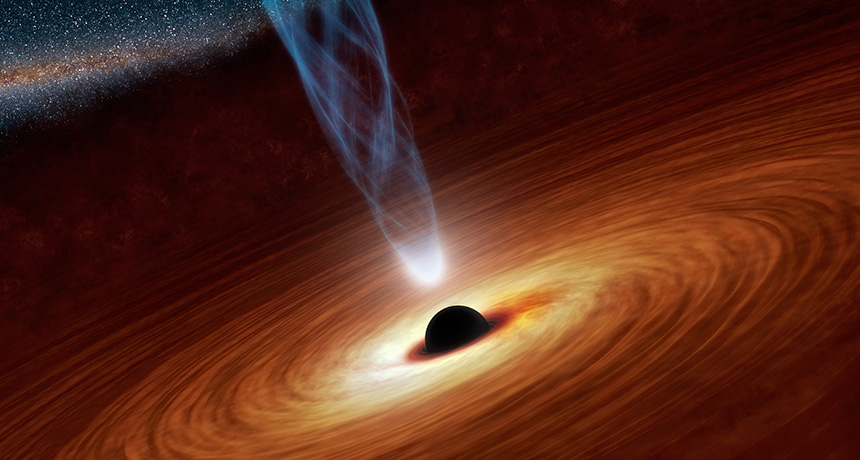Massive black hole lurks in lightweight galaxy
Behemoth grew rapidly but didn’t suppress star formation

FIRST BURST A supermassive black hole (illustrated) in the early universe suggests some black holes got a head start on the galaxies they inhabit.
JPL-Caltech/NASA




